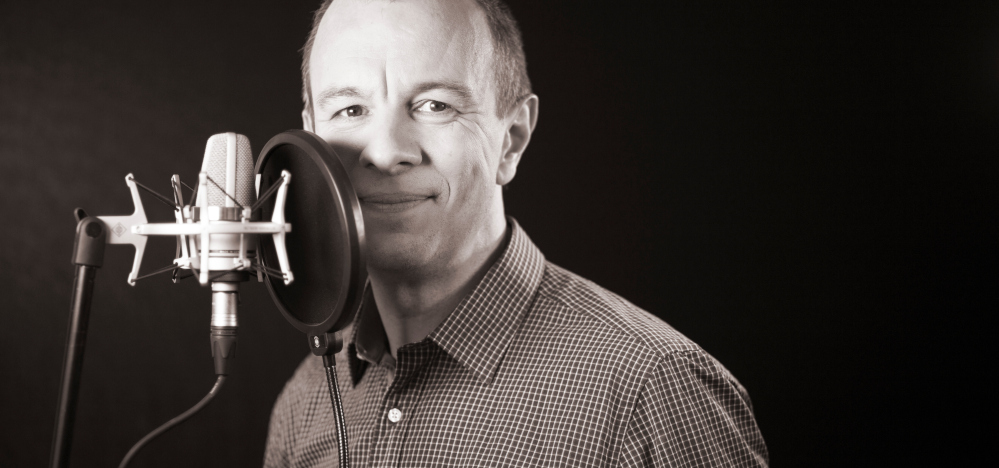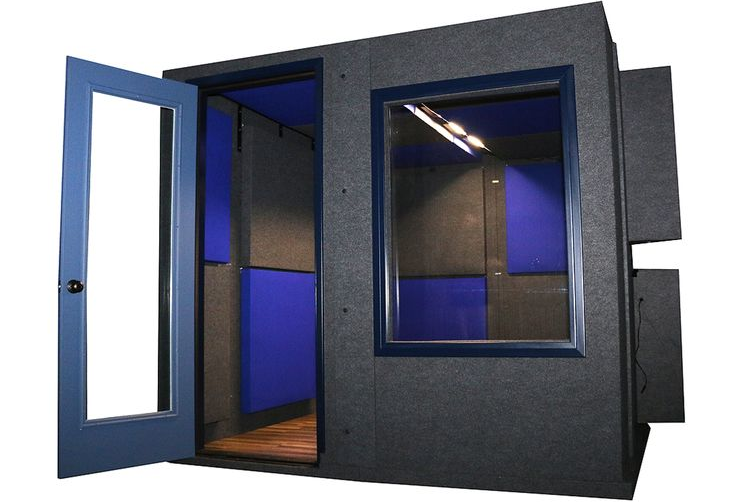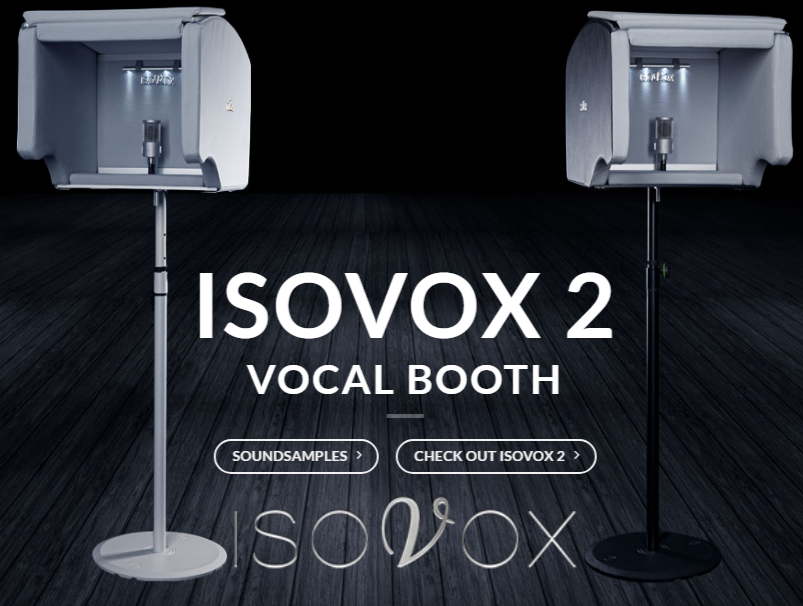Our content is reader supported, which means when you buy from links you click on, we may earn a commission.
Top 4 Voice Over Booth Options Along with Benefits and Considerations

Creating a video can be a daunting task. You want to make sure that every aspect of it is perfect, from the content to the visuals. But one element that often goes overlooked is the voiceover.
The voiceover can make or break your video, so it’s important to choose a quality narrator who can bring your content to life. If you’re looking for a professional and affordable way to record your voiceovers, consider investing in a voiceover booth.
A voiceover booth will provide you with a quiet and controlled environment where you can record your narration without any distractions. Plus, it’s a great way to ensure your audio quality is top-notch.
So if you’re ready to take your voiceovers to the next level, invest in a voiceover booth!
Top Benefits of Voiceover Booths
Voiceover booths are like a magic portal into which you can step to get spot-on sound results. Making crisp recordings is essential in lots of professions, such as music or voice-over.
Even if you’re just a hobbyist who enjoys making music or podcasts, clear sound recordings will definitely benefit you. Thus, we’ve put together a list of four major advantages of owning a voiceover booth:
1. Work From Home
Nothing beats the convenience of working from home, at least in the opinion of the majority of workers. According to a survey of nearly 9,000 workers, 61% agreed that working from home makes their days more balanced and productive.
A musician or voice-over artist can get this kind of experience by having a voice-over booth in their own home. You don’t have to go to a recording studio every time you need to start, continue, or edit a recording.
Consider how many hours you’ll save commuting to the studio that can use to get some extra work done!
2. Comfortable Long Sessions
Long sessions are usually a daunting task for most artists. Yet, they’re sometimes inevitable, such as when finalizing a music track, creating an online course, recording a book, or narrating a movie. The preceding are just a few examples of tasks that can take hours, days, or even months to complete.
In these cases, voice-over booths come to the rescue by making these recordings much more bearable. When recording at home, you can get a snack whenever you want and have access to a comfortable space if you need to rest.
Most importantly, you can do some extra chores throughout the day and return to recording whenever it’s convenient for you. As a result, you won’t feel like these long sessions are taking up your entire day.
3. Sound Absorption Is Vital
One of the factors that can make or break a recording is its sound quality. Some may believe that investing in a good microphone and working from home will suffice, but this isn’t always the case.
For example, as a narrator, your voice should be very dominant in the recording, with no sounds reflected from the background.
If these criteria aren’t met, the sound produced will be of low quality, and the recording will be perceived as unprofessional. That’s the last thing you want if you want to grow your client or fan base.
Voice-over booths are built with layers of sound-absorbing materials such as acoustic foam. This type of padding is quite effective at producing crisp recordings as it manages two major factors that influence sound clarity.
Gets Rid of Echo
The echoing caused by our own voices or musical instruments is an artist’s nightmare. Natural reverb caused by sounds striking nearby surfaces will ultimately be noticeable in your work affecting the overall quality of your recording.
Fortunately, the padding in the booth absorbs echo, so this won’t be an issue while working in a voice-over booth.
Reduces Acoustic Noise
Acoustic noise is essentially any sound that obstructs the primary sound you want to hear. This refers to any background noise that occurs during the recording process, but these booths are designed to muffle it.
4. Portable Vocal Booth
Most voice-over booths are portable, so it’ll be like carrying a small recording studio with you wherever you go! If you’re staying at a friend’s or family member’s house for a while, you can easily relocate it and continue working normally.
Voiceover Booth Considerations
Moving on to the four key factors to look for in a voice-over booth:
1. Modular
Modular designs will come in handy in a variety of situations, and many voice-over booths are structured using them. When the booth’s walls are made of adjustable panels, this makes it simple to transport and change the booth’s size.
2. Sizing
Before purchasing a voice-over booth, you should think about how many people will be using it. To clarify, if you’re a solo artist, buying a small booth will work just fine.
However, that won’t work if you’re a band that usually records more than one person at a time. In this case, you should look for more spacious options.
3. Ventilation
Having a proper ventilation system in the booth is crucial. You’ll be in there for a while, so you’ll need consistent airflow at all times.
Nonetheless, you should always check to make sure the ventilation system in the booth is silent. Its construction will vary depending on the brand, but it usually consists of:
- Fans
- Vent boxes
- Ducts
Ideally, the fans should run at full capacity without making any noise, and the vent boxes should be lined with sound-absorbing material.
4. Pricing
We’re not going to lie, voice-over booths are pricey but well worth the investment. It’s difficult to pin down their price range because it varies drastically from one type to another.
For example, the simple design that only features a sound insulation blanket is a reasonably priced option that costs a few hundred dollars. Whereas, if you want premium models, which are designed professionally to produce flawless recordings, expect to pay thousands of dollars.
Voice-Over Booth Options
Here are four popular voice-over booth designs for you to explore. Each of these can also be replicated and we go through do it yourself (DIY) options for you as well.
1. Premium Sound Booths
The premium sound booths are the most challenging to build but also the most rewarding. They’re one of the best designs for producing high-quality recordings, and you can replicate them for a lot less money.

The first thing you’ll need to take into account is the size of the booth you want to have. Try not to build one that is too small, so you don’t have to go through the trouble of building again to increase its size.
The main concept behind their construction will be to use high-density materials such as timber to build the booth’s skeleton. A lot of sawing will need to be done, so we recommend hiring a professional if you aren’t an expert on this subject.
The inner walls of the booth will then be lined with sound-absorbing materials. The key here is to make sure that you’ve filled in all of the gaps in the booth that could allow noise to leak in. Even the door itself should be built to exactly fit into its frame when closed.
2. Snap Studio Voice Booth
The snap studio model is super simple to replicate. Although it doesn’t provide the same level of insulation as the premium type, it’s a good place to start. 
- Grommeted moving blanket
- PVC pipes
- Sound blanket
- Foam mat
You’ll first assemble a structure out of PVC pipes, then hang the grommeted moving blanket to surround it. The foam mat will serve as the booth’s floor, the sound blanket will be its roof, and voila!
3. Isovox Portable Mobile Vocal Studio Booth
The core concept of Isovox is to have a small portable booth wherever you go. It’s not a full booth intended to accommodate your entire body, only your head. Thus, creating a DIY version of it would be quite easy.

For the booth’s walls, you’ll need four wood panels. You’ll then apply the acoustic treatment to each one of them, and integrate your favorite microphone into the wall you’ll be facing.
To make the rear cover, or curtain, sew two pieces of soft cloth together after adding fiber padding. Finally, you can mount the booth on a tripod or something similar—and you’re done.
4. LyxPro Vri-50 Mic Shield Bundle
This LyxPro model is designed to create a shield around the microphone in order to capture your vocals clearly. However, as with the Isovox model, this isn’t a full vocal booth.
You can construct this shield’s body with metal, wood, plastic, or any other sturdy material you have on hand. In any case, it should be padded entirely with egg crate foam for acoustic insulation.
In this model, it’s critical to use hinges between the body’s back panel and the two front panels. This is to ensure that the shield’s front doors open and close easily whenever you want them to.
FAQs on Voice Over Booths
Is a portable vocal booth worth it?
When you’re performing or recording, it’s essential to have a space that’s acoustically sound so that your voice doesn’t get lost in the mix. That’s where portable vocal booths come in.
Portable vocal booths are designed to provide a space for voice over artists to perform or record without worrying about excess noise or echo. They’re typically made out of acoustic foam and other materials that help to absorb sound. Portable vocal booths can be expensive, but they’re worth it if you’re serious about protecting your voice. Plus, they’re portable so you can take them with you wherever you go.
How quiet should a vocal booth be?
If you’re recording voiceovers or podcasts, you’ll want a noise level that’s as low as possible so that your audio is clear and free of background noise. However, if you’re just using the booth for practicing vocals or speaking on the phone, a little bit of background noise may not be a big deal.
Do blankets work as vocal booths?
The simple answer is yes, blankets can absolutely work as vocal booths! A lot of people don’t realize that blankets are actually really great at absorbing sound. This is why they’re often used in recording studios.
By placing a blanket around you or your microphone, you can help to reduce the amount of reverberation and background noise. This can be a huge help if you’re trying to record a clear and concise vocal track.
How big should a vocal booth be?
If you’re just recording your voice for a podcast, then a small closet might be fine. But if you’re doing professional voice work, then you’ll want something a little bigger so you can get the best sound quality. The size of the room also matters.
A smaller room will have more reflections and echoes, so you might want to try recording in a larger space if you’re not happy with the sound in a small room. Ultimately, it comes down to experimenting and seeing what works best for you.
What is the best shape for a vocal booth?
There is no one best shape for a vocal booth, as the optimal layout will depend on the specific acoustical needs of the space. However, there are some general guidelines that can be followed in order to achieve good results.
- The booth should be small enough to allow for close proximity between the singer and the microphone, while still providing sufficient space for movement.
- The walls should be designed to minimize reflections and diffractions, and the ceiling should be low enough to prevent sound from escaping.
- Lastly, the booth should be isolated from external noise sources as much as possible.
Final Thoughts
If you’re looking for a voiceover booth, it’s important to find the best one to fit your needs.
We’ve outlined some things to look for when choosing a voiceover booth and shared some of our top picks.
Hopefully, this gives you a good starting point as you begin your search for the perfect voiceover booth for your needs.
